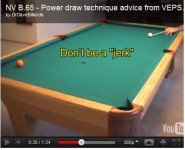Stan might be a wee bit biased in testing his own system. Maybe Dr. Dave could do an objective analysis as he's done this many times before?I don't understand CTE or the like well enough to try to set up an experiment, someone would have to coordinate with a successful practitioner of the system. Very possibly Stan and Pro One might be the best system to try to test simply because Stan seems to be both an intelligent and reasonable man with a real desire to understand things himself.
Hu
Oh, wait. Didn't Dr. Dave already perform rigorous testing of CTE and ProOne? Unfortunately, Dr. Dave's scientific analysis and conclusions didn't go over too well with the Yeahsayers' crowd.
Last edited:
